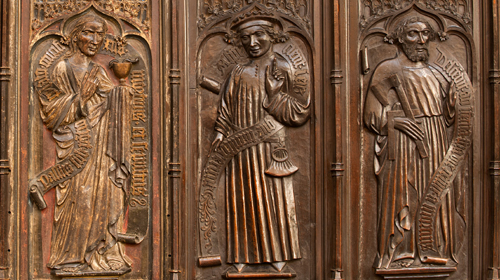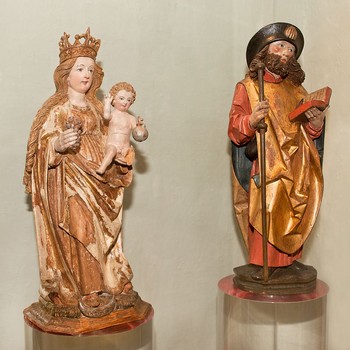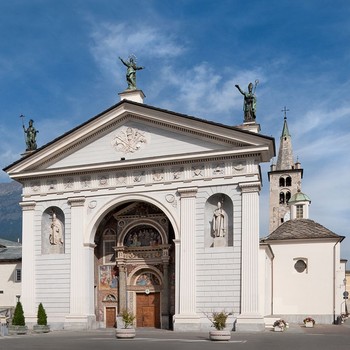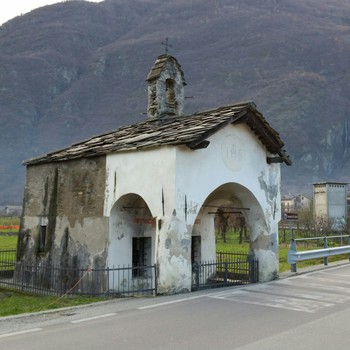Aosta Cathedral Treasury Museum
Diocesi di Aosta
Aosta Cathedral Treasury Museum shows a significant selection of Valle d’Aosta’s sacred art heritage.
Cathedral of Santa Maria Assunta
Diocesi di Aosta ( sec. IV; XI; XIX )
Founded at the end of the 4th century, Aosta Cathedral was rebuilt seven centuries later. It was further modified by major refurbishments in the 15th–16th and 19th centuries.
Chiesa di Santo Stefano
Diocesi di Aosta ( sec. XV; XVIII )
La fondazione della chiesa di Santo Stefano di Aosta risale ad epoca paleocristiana. Ricostruita nel XV secolo, è stata ristrutturata nel terzo decennio del Settecento assumendo l'aspetto attuale.
Chiesa Collegiata dei Santi Pietro e Orso
Diocesi di Aosta ( sec. V; XII; XVIII )
Sorta fuori dalla cinta muraria dell'antica Augusta Praetoria, la Chiesa Collegiata dei Santi Pietro e Orso è la chiesa cittadina più importante dopo la cattedrale. E' annesso il celebre chiostro con capitelli istoriati del XII secolo.
Cappella del Saint Sudaire
Diocesi di Aosta ( sec. XV )
Sulla strada che collega Verrés a Issogne si trova una piccola cappella caratterizzata da una particolare architettura, col tetto che si prolunga oltre il corpo principale, formando una sorta di portico retto da due massicce colonne.
Museo parrocchiale di Campertogno
Diocesi di Novara
Adiacente alla monumentale chiesa di Campertogno è ben distribuito in accoglienti sale espositive dell’edificio parrocchiale il Museo della Parrocchia, realizzato per volontà del compianto parroco don Pier Cesare De Vecchi, illuminata figura di sacerdote.
Aosta Gothic and French Models

Aosta and its valley turned their gaze beyond the Alps, almost sidestepping the plains and low valleys, and encroaching Italianization. The collegiate church was where different stylistic references merged and the master wood carvers who worked here included Jeninus Braye, commissioned by the Challant family. The cultural context was one of carving inspired by Geneva, a city which the Aosta area observed with continued interest through the late 1400s–early 1500s. Jean Vion and Jean de Chetro arrived from Chablais, working on the cathedral choir and leaving self-portraits there. The choir has many points of contact with the carvings found in the cathedral of Saint-Jean-de-Maurienne, possibly by Geneva-born Pierre Mochet. At Sant’Orso the uncomplicated composition and carving of the choir in the Jura cathedral of Saint-Claude (a model from a generation prior to that of Jean de Vitry) were revived in 1465.










